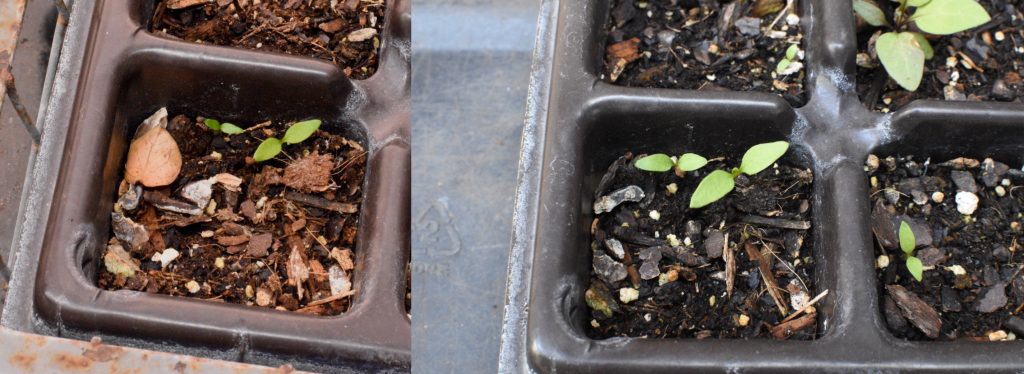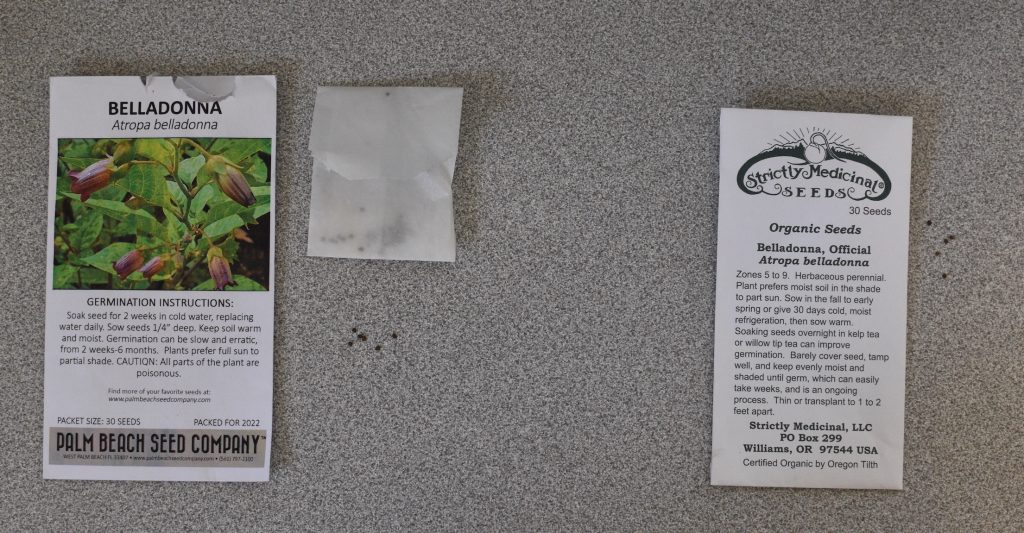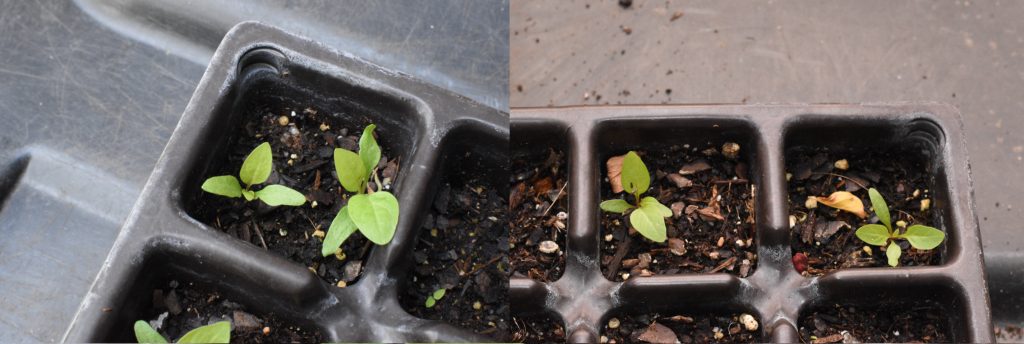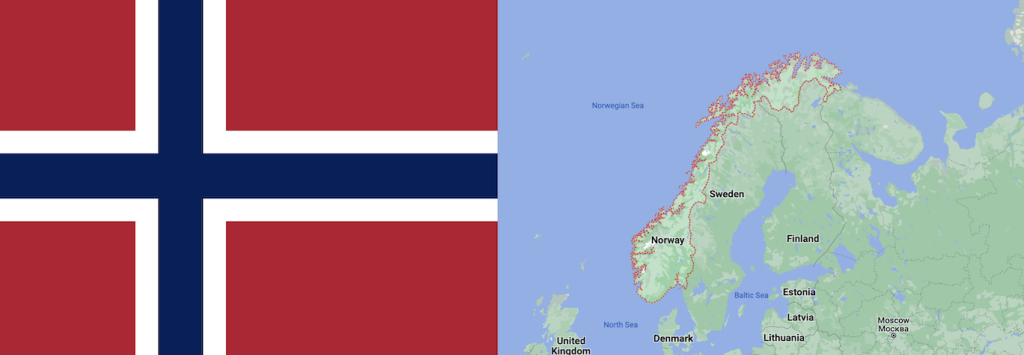The early growth of deadly nightshade (Atropa belladonna) shows some typical features of a plant in the Solanaceae family. The Solanaceae is also called the nightshade family. Other plants in this family include tomatoes, chili peppers, potatoes, eggplant, and tobacco. As a gardener and a biologist, how plants grow interests me. And, with a bit of observation, it is easy to gain some understanding into how a tiny sprout eventually unfolds into a larger adult plant.
In this blog, I will highlight the early growth stages of a variety of plants. These will include common garden vegetables and native perennial wildflowers. Not only is this interesting, but it has a practical value. Most gardening guides show only adult plants, with flowers or hanging fruit, to illustrate an entry on a plant. However, it is helpful for a gardener to be able distinguish the small seedlings of desired plants from weeds and to be able to identify volunteer plants in a garden. In the spring, I will compare early tomato and pepper development to this plant.
Most vegetable gardeners plant their seeds in the spring. The seeds sprout soon after and the plants flower and bear fruit while it is still warm. However, there are many perennial wildflowers that are best planted in the fall. Some of these will emerge during the winter and will die off when the weather warms up. Deadly nightshade is happy to sprout in cold temperatures. So is larkspur, which typically dies back when other early blooming wildflowers are just starting the bud. Deadly nightshade is notoriously hard to germinate, and how I got my seeds to sprout will be the topic of a separate post. But they are sprouting now, and by looking at the sprouts, you can see how the plant develops through its earliest stages.
Flowering plants can be divided into dicots and monocots. The “cot” in dicot and monocot refers to the seed leaves, or cotyledons. Dicots have two. Monocots have one. Most common garden vegetables and wildflowers are dicots. Monocots are grassses such as corn, wheat, barley, oats, rice, etc. The cotyledons, along with the stem, are the first structures to appear above the soil when the plant sprouts. If a plant emerges and initially has two “leaves,” it’s a dicot.

Left: Two seedlings that have just emerged. You can see the seed coats still attached to their cotyledons. Right: Same two a few days later, and a couple other new sprouts.
What happens next depends on the species of plant. In the case of deadly nightshade, the first true leaf emerges by itself. This single-lobed leaf is oriented perpendiciular to the long axis of the cotyledons. Next, the second leaf emerges opposite the first leaf. At the two-leaf stage, the two cotyledons and two leaves form a cross.
This is not the only pattern in dicots, however. In some plants, the first two true leaves emerge opposite each other simultaneously. And what comes after that also varies. Some plants quickly elongate their stem and keep producing leaves at regular intervals. Others develop a large number of leaves to form a small mound of vegetation. But for now, here is how deadly nightshade starts its life cycle. More later.





Recent Comments